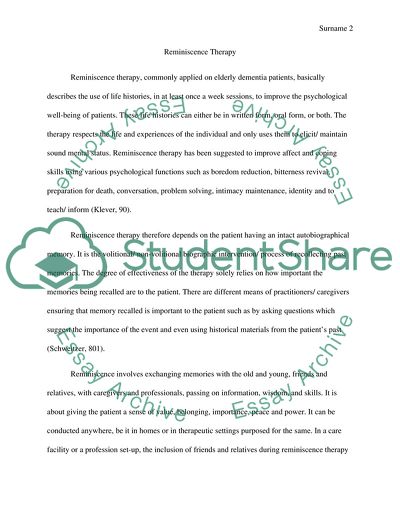Cite this document
(Effects of Reminiscence Therapy and Activities for Elderly People With Dementia Coursework Example | Topics and Well Written Essays - 2750 words, n.d.)
Effects of Reminiscence Therapy and Activities for Elderly People With Dementia Coursework Example | Topics and Well Written Essays - 2750 words. https://studentshare.org/psychology/1834776-the-effects-of-reminiscence-therapy-and-activities-for-elderly-people-with-dementia
Effects of Reminiscence Therapy and Activities for Elderly People With Dementia Coursework Example | Topics and Well Written Essays - 2750 words. https://studentshare.org/psychology/1834776-the-effects-of-reminiscence-therapy-and-activities-for-elderly-people-with-dementia
(Effects of Reminiscence Therapy and Activities for Elderly People With Dementia Coursework Example | Topics and Well Written Essays - 2750 Words)
Effects of Reminiscence Therapy and Activities for Elderly People With Dementia Coursework Example | Topics and Well Written Essays - 2750 Words. https://studentshare.org/psychology/1834776-the-effects-of-reminiscence-therapy-and-activities-for-elderly-people-with-dementia.
Effects of Reminiscence Therapy and Activities for Elderly People With Dementia Coursework Example | Topics and Well Written Essays - 2750 Words. https://studentshare.org/psychology/1834776-the-effects-of-reminiscence-therapy-and-activities-for-elderly-people-with-dementia.
“Effects of Reminiscence Therapy and Activities for Elderly People With Dementia Coursework Example | Topics and Well Written Essays - 2750 Words”. https://studentshare.org/psychology/1834776-the-effects-of-reminiscence-therapy-and-activities-for-elderly-people-with-dementia.


